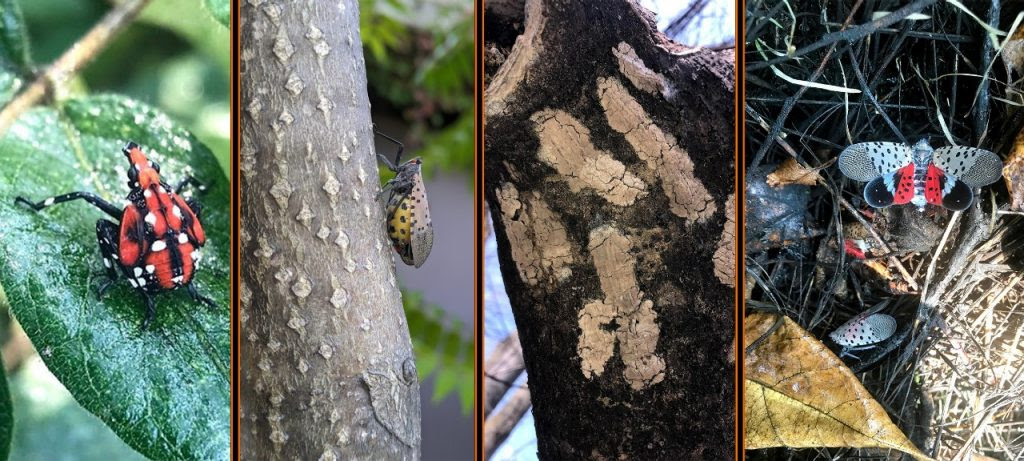
It’s visually striking. When fully grown, open wings display showy hind wings with bright red near the abdomen, black spots, and black-and-white bars.
But the spotted lanternfly, an invasive insect that came to the United States from its native habitat of Southeast Asia in 2014, is destructive. Despite its name, though, the spotted lanternfly is not a fly. It belongs to the order Hemiptera, which includes true bugs, aphids, and cicadas.
These insects colonize quickly, disrupt native ecosystems, and potentially cause problems to agriculture and forest health. The spotted lanternfly is also a significant threat to Virginia’s grape and wine industries.
The College of Agriculture and Life Sciences at Virginia Tech, the Institute of Agriculture at the University of Tennessee, and the College of Agricultural and Environmental Sciences at the University of Georgia are working together to build public awareness about these most unwanted visitors through collaborative videos, social media posts, and stories.
In Virginia, the College of Agriculture and Life Sciences and the Virginia Department of Agriculture and Consumer Services are partnering to empower residents of the commonwealth to act themselves on the spotted lanternfly.
“We need to prevent spotted lanternfly from going somewhere else and becoming a bigger problem,” said Eric Day, manager of the Insect ID Lab in the Department of Entomology. “Make sure it does not move on vehicles or plants and remove and squish any you find.”
In late spring and early summer, look for the immature stages and control them early on grapes or in backyards. Also, look in your backyard for the spotted lanternfly’s favorite host tree – the tree of heaven. If possible, remove those trees as they function as a host that enables the insect to spread further and quicker.
As the summer heat ramps up, check car wheel wells, boat trailers, or box trucks to make sure the unwanted hitchhikers haven’t found a free ride. Everyone can play a part by stomping the spotted lanternfly.
“I’ve been impressed with the citizens of Virginia in their efforts to reduce the impact of the spotted lanternfly,” Day said. “Active citizens and businesses in quarantine areas have helped slow spread significantly. Now, to stop this insect from becoming a bigger problem, we must take action to make sure this hitchhiking insect doesn’t get any free rides through our state.”
In addition to the actions that everyone can take, Virginia Cooperative Extension has an abundant library of digital and online publications and resources geared toward providing our communities with specialized information tailored to local environments and challenges, such as resources to help with the spotted lanternfly.
Tom Soladay for Virginia Tech



